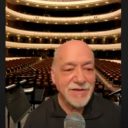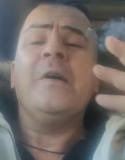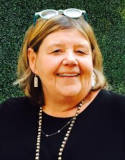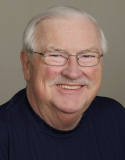100 Essential Albums: #96 — The Doors by The Doors (1967)

“Every time I hear (the song, “The End”), it means something else to me. It started out as a simple good-bye song. Probably just to a girl. But I see how it could be a goodbye to a kind of childhood. I really don’t know. I think it’s sufficiently complex and universal in its imagery that it could be almost anything you want it to be.”
— Jim Morrison (an in interview shortly before his death at age 27)
If 1960’s rock n’ roll was all about breaking the rules, then no pop group was more unruly than The Doors, the Los Angeles-based psychedelic rock band fronted by charismatic vocalist Jim Morrison and backed by the idiosyncratic instrumentation of Ray Manzarek on keyboards, Robby Krieger on lead guitar, and John Densmore on drums.
The Doors formed as a group in mid-1965 at the very height of the British invasion. But they managed to craft an innovative native sound and archetypal look that became a mesmerizing concoction of jazz, blues, art, poetry, sex appeal, and even classic philosophy. At times so deeply introspective to the point of being seemingly withdrawn from their audiences, on other occasions wildly fun and flamboyant, The Doors covered vast acres of musical real estate during their four-year, six-album career spanning the creative period considered by many to be the fertile era in pop music history, 1967-1971.
The Doors self-titled debut album (The Doors) was released in the first week of January 1967. However, initial recording sessions began nine months earlier in mid-1966 at Sunset Sound Studios in Los Angeles. Given most of the material which eventually appeared on the album was written by the band long before either Pet Sounds by The Beach Boys or Sergeant Pepper’s Lonely Hearts Club Band by The Beatles had been released, those albums considered the two breakthrough masterpieces of the era, the contents are preposterously ahead of their time.
Until that first album, The Doors had been the house band at Whisky A Go-Go, the rowdy cradle of a nightclub on Sunset Boulevard that nursed some of the greatest acts ever in their infancy — from The Byrds to Van Halen to Guns and Roses. Thought to be way too uncultivated for mainstream tastes and a longshot for commercial success, most record companies rejected signing The Doors. After being dropped following a short and nonproductive stint with Columbia Records because they couldn’t sign a suitable producer willing to work with them, The Doors embarked on a new record deal with Elektra. Some of their previously-recorded tracks were redubbed, a few lyrics were changed, new songs were added, and by the time producer Paul Rothchild was finished mixing the 11-song album, he and everyone involved in the project knew that new “doors to perception” had been kicked wide open. The Doors album would go on to sell 20 million copies. Rolling Stone ranked it as the 42nd greatest album in rock n’ roll history.
Spanning nearly 45 spellbinding minutes, two of the album’s best songs (“Light My Fire” and “The End”) were considered way too long for Top-40 radio airplay, then the bedrock of creating a hit single. One song (“Backdoor Man”) was banned from radio for being too sexually suggestive. Nonetheless, The Doors succeeds as a concept album packed with clashing musical styles and sounds, both old and new — from blues to jazz to psychedelia. Moreover, it’s a bold statement of arrival for a new music group that would clearly be worth listening to and watching during a combustible era when bands and singers began seizing more control over their work. From the album’s first note, The Doors instantly become a magnet of intrigue.
Side One of The Doors starts with “Break On Through (To the Other Side),” setting the boisterous tone for Morrison’s wailing, staccato-laced vocals. However, the most distinctive sound on this song (and most of the album) is undoubtedly Manzarek’s bluesy keyboards often played just slightly behind tempo giving each song the crotchet that we’re being pulled in a different direction, about to embark on a new journey.
Track #2, “Soul Kitchen” reinforces Morrison’s vocal prowess. “The Crystal Ship,” a love song written by Morrison for a former girlfriend drastically changes up the tempo, although by this third song we’ve become attuned to the quirky unison of guitar, keyboard, and drums carrying Morrison’s lead. Here’s the official video that was released for “The Crystal Ship” back in 1968:
“Twentieth Century Fox” is the rousing fourth track on the album, a frolicking rocker loaded with sexually-charged double entendre. The song plays upon the widely-familiar name of the famous Hollywood movie studio juxtaposed with an attractive young girl, yet also leaves something to our tawdry imagination:
She’s the queen of cool
And she’s the lady who waits
Sent to manless school
It never hesitates
She won’t waste time
On elementary talk
Track #5 is “Alabama Song (Whisky Bar),” one of two non-original compositions included on the album, was later covered by David Bowie with somewhat greater success. Side One concludes with the rock classic “Light My Fire,” the 7-minute long ode to the heat of passion that topped the pop charts for three weeks. One gets the sense that every Morrison enunciation, including the lyric, “c’mon baby light my….fye-yaaaaaah” was the carefully crafted distillation of hundreds of previous Whisky A Go-Go stage performances. Incredibly, solo singer Jose Feliciano covered The Doors’ original just a year later. His more mellow acoustic version of “Light My Fire” peaked at #3 on the charts.
Side Two of The Doors begins with Willie Dixon’s scandalously racy “Backdoor Man,” which isn’t quite what it seems. The song title and suggestive lyrics actually refer to an affair with a married woman in which the back door is used for an emergency escape in case the husband comes home early. Years later, various versions of “Backdoor Man” were used in several parodies pranking former Vice President Dick Cheney’s clandestine political methods of getting things done “through the back door.”
The next three songs in succession are “I Looked at You,” “End of the Night,” and “Take It as It Comes.” These standard 3-minute tracks set up the grandiose and gutsy 12-minute finale.
The album’s daring climax represents the pinnacle of creation appropriately titled, “The End,” which is rock art in its rawest and purest form.
Not all music is intended to make us feel comfortable. Some music is determined to jolt us from conventional thinking and cozy comfort zones. “The End” is precisely such a song. Loaded with bizarre imagery, conflated symbolism, and downright scandal, the song is incendiary, especially for its time. One interlude even utilizes elements of Freudian psychology, including lyrics rooted in the Oedipus Complex.
The Doors played “The End” as their closing curtain call during most of their live performances. But the lengthy rock aria took on added significance and became apotheosized in pop culture when writer-director Francis Ford Coppola selected it as the opening and closing soundtrack for his 1979 chaotic film masterpiece about the Vietnam War, “Apocalypse Now.”
The Doors recorded their first two albums simultaneously. While inside the recording studio, no one in the group knew precisely which tracks would end up on either the first or second album. Both albums were comprised of content performed live countless times at Whisky A Go-Go, streamlined into a format intended for commercial release as best they could. But anyone who ever watched The Doors perform live recognized this wasn’t music designed for a catchy 3-minute single. Accordingly, Strange Days, which was released in August 1968 seven months after The Doors reached #2 on the Billboard charts is in many ways the unofficial double-album accompaniment to the debut.
Strange Days includes “People Are Strange,” “Love Me Two Times,” and yet another epic finale in the same vein as “The End,” titled “When the Music’s Over.”
To get a sense of how tight this band was as a unit, watch this excellent concert footage from the 1968 Hollywood Bowl performance. Pay particular attention to each instrument, particularly John Densmore on drums. He’s fabulous.
Now 50 years later, The Doors’ debut album combined with ten additional original songs included on the Strange Days follow-up LP stands as a lasting testament to the group’s effervescent power, innovation, and magnetism. The Doors would go on to make four more albums, ending their collaborative ambitions when Jim Morrison died in Paris, in 1971.
For those who love The Doors and their music, Morrison’s untimely death and the group’s eventual dissolution was not the end. Rather, it marked a new beginning. Like most who appreciate them now, the vast majority of Doors’ admirers matured into adulthood long after the group faded as a groundbreaking force of sound and energy. I was 9 years old when The Doors released their final album, L.A. Woman. I didn’t really discover them until ten years later. No doubt, future generations too shall recognize the timeless quality of their compositions.
So no — the music wasn’t over. It’s still with us. The Doors and their music continues to move us, inspire us, and make us think.
Note: This is the latest segment in a series of reviews and retrospectives of my “100 Essential Albums,” which will be posted here regularly on my website over the next year, or so. Previous selections include:
#100: Black Moses — by Isaac Hayes (1971)
#99: Soul of a Man — by Al Kooper (1995)
#98: Jagged Little Pill — by Alanis Morissette (1995)
#97: Ol’ Blue Eyes is Back — by Frank Sinatra (1973)













But “Light My Fire” was a single and went to #1…